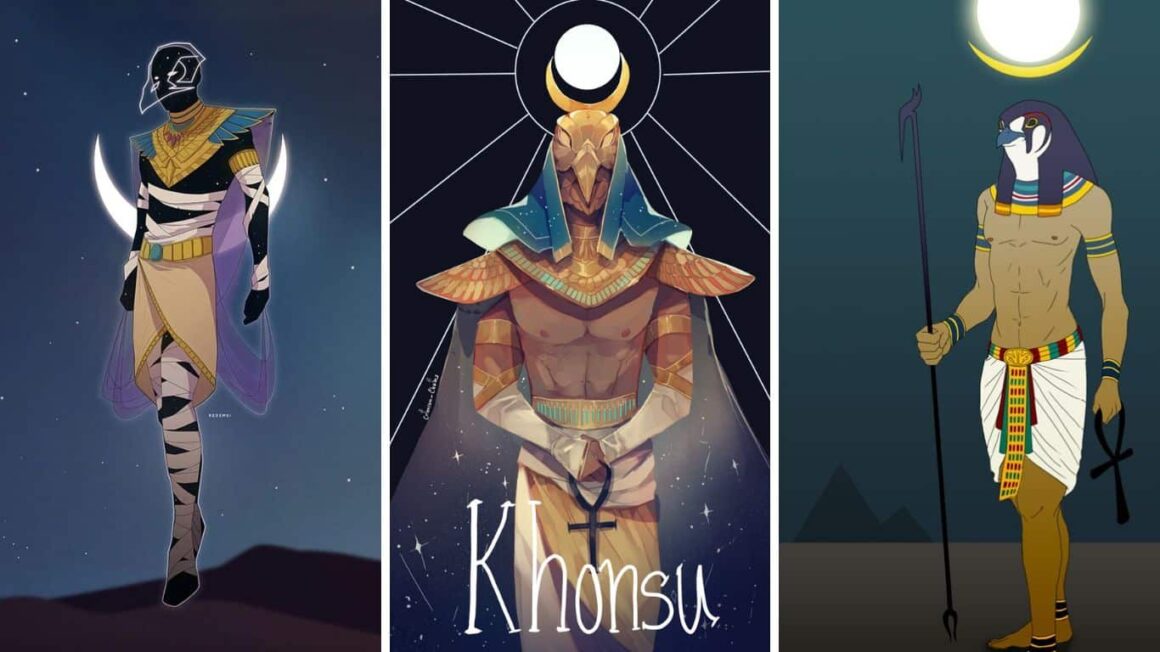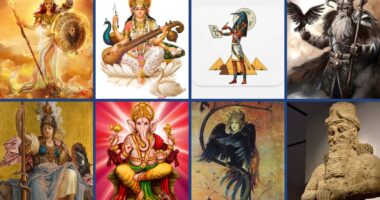Khonsu: Egyptian god of the moon, was one of the numerous Egyptian gods and goddesses. The spellings of his name include Khensu, Chunsu, Chons, Khonshu, and Khons. His name, which indicates ‘traveller’, most likely derives from the way the moon travels across the sky. Khonsu is translated as ‘wanderer’ or ‘navigator’ by other historians.
More about Khonsu
The moon’s patron god in ancient Egypt was named Khonsu. Most of his worshippers came from Thebes. He used the crescent moon as his emblem. His name means ‘traveler’ led people to assume that he was the guardian of travelers, especially at night. He also served as the deity of healing, though. The crescent moon set against the lunar disc is a Khonsu sign.
The healing powers of Khonsu are linked to a number of remarkable occurrences. In the Princess of Bekhetan tale, an Egyptian monarch asked Khonsu to take the form of a statue so that he could travel to Syria and heal a princess. The deity entered the statue after agreeing. The princess received the statue. The statue was capable of healing the princess since the illness was brought on by evil spirits, who were expelled when it came. Khonsu then took a bird to fly back to Thebes. The appellation ‘Beloved Khonsu Who Protects His Majesty and Drives Away Evil Spirits’ refers to him as having cured King Ptolemy IV of an enigmatic disease.

Khonsu was connected to fertility in addition to healing. This is because a woman’s menstruation and the lunar cycle are linked. Women turned to Khonsu for assistance in conceiving a child, for instance, and the word “menstruation” is derived from Mene, the Greek word for moon.
Dark Side
Khonsu had a darker side as well. He appears to have been viewed as a fierce and dangerous god in the early days of Egyptian history. Sometimes he is described as a bloodthirsty deity who aids the deceased monarch in catching and devouring the other gods in the ‘Cannibal hymn’, and he is referred to as ‘Khonsu who lives on hearts’ in the Coffin Texts. He was however principally revered by the New Kingdom as the kind and caring son of Amun and Mut.
Mighty Khonsu
He was referred to as the “mighty bull” during new moons and was connected to a neutered bull during full moons. In addition to ruling the month, this god was also thought to have ultimate control over the bad spirits who plagued the ground, the air, the sea, and the sky. These demons turned against man by attacking his body with aches, illnesses, and diseases, causing decay, lunacy, and death. In addition, he was the one who gave life to plants, fruit, and animals, as well as the love god to both men and women.

He was also considered to assist in childbirth for women and healthy cattle reproduction. Khonsu was perceived to be a youngster in the morning and an old man in the evening. He was also described as a young man at the start of the year. Within the grounds of the temple of Karnak, the Great Temple of Khonsu had been constructed. Ramesses III started it in the New Kingdom, and several following kings expanded on it. In the main area of the temple, several manifestations of the god, aspects of the moon god, were likely worshipped.
This god’s various facets might actually communicate with one another. For instance, the Bentresh Stela relates how Khonsu confronts his own incarnation, Khonsu pa-ir-sekher, in order to release a foreign queen from an adversarial spirit.
Connection with other Gods
Khonsu was linked to a variety of different deities. He was referred to as “Khonsu-Djehuti” in Khumnu, connecting him to Thoth. He was connected to Ra, Shu, Min, and Horus while in Thebes. Osiris and Khonsu, who later went by the name of the two bulls, stood in for the sun and the moon, respectively.
At Kom Ombo, Khonsu was believed to be the child of Sobek and Hathor, and at Edfu, he was believed to be the child of Osiris and recognized as “the son of the leg”. Khonsu was regularly connected with Amun and Mut at Thebes, at Kom Ombo.

Khonsu’s Representation
He was typically shown as a young man with a mummiform figure holding a mummy-like position. The sidelock of youngsters and the curled beard of the deities are often what he sports when playing the boy of Amun. He frequently sports a headpiece made of a full lunar disc lying inside of a crescent moon, and he holds a flail and crook in each hand. On rare occasions, he carries a stick with a Was or Djed on top. He usually wears a loose necklace with a pectoral in the form of a crescent moon and a counterpoise in the form of an upside-down keyhole. He resembles Ptah so much in his mummified form that the only method for distinguishing them apart is to look at their necklaces; Ptah’s counterpoise has a different shape.
Khonsu was also pictured as a falcon-headed figure, however, unlike Horus or Ra, he occasionally wears a headdress with a lunar rather than a solar emblem on top. He shared Thoth’s affinity for the baboon, but he was rarely portrayed as one. He and his parents Amun and Mut may be shown on plaques from a later era as complete humans or in the falcon-headed form. Like Horus, he might also be seen standing atop a crocodile.
Also Read: Deities of Wisdom, Knowledge, and Intelligence From Different Mythology



